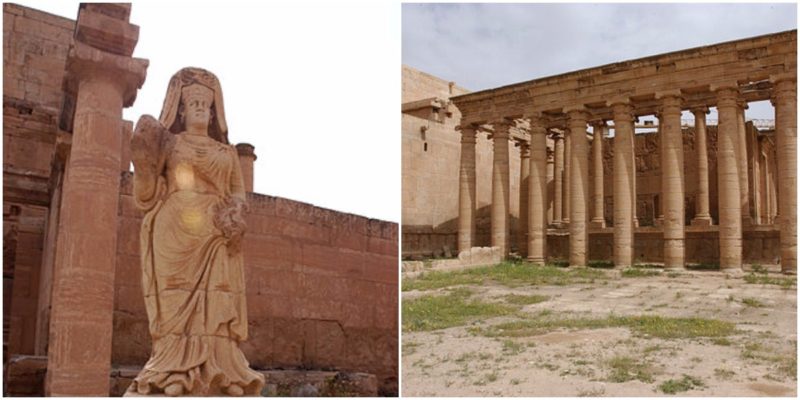Hatra is a large fortified ancient city located approximately 180 miles northwest of Baghdad and 68 miles southwest of Mosul in the Ninawa Governorate and Al-Jazirah region of modern-day northern Iraq.
Hatra was one of the great cities of the Parthian Empire. The city was known as Hatra in Persian language and al-Hadr in Arabic.
Throughout the centuries, the old metropolis developed under the influence of several great civilizations.
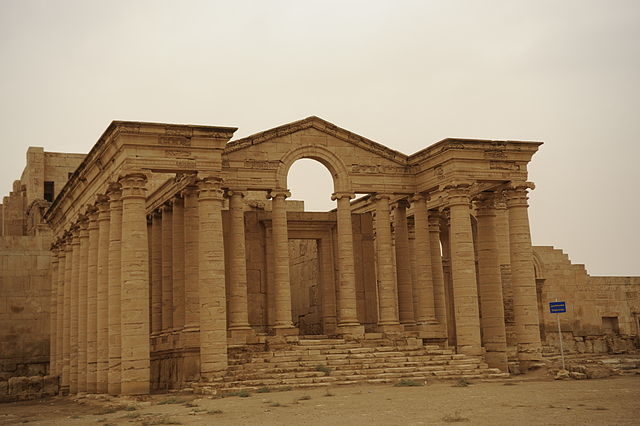
Some historians and archaeologists believe that Hatra was probably built by the Assyrians or may be founded in the 3rd or 2nd century BC, under the rule of the Seleucid kingdom. However, there are no artifacts from Hatra from before the Parthian period.
As a religious and trading center of the Parthian Empire, it prospered during the 1st and 2nd centuries AD, mostly because of its strategic position on caravan trade routes. Later, it became the capital of the first Arab Kingdom.
The Arab cities of Hatra in the northeast and Palmyra, Baalbek, and Petra, in the southwest, formed this kingdom. This region, on the western frontiers of the Parthian Empire and controlled from Hatra, was known as the Kingdom of Araba. The city flourished further as the capital and center of Araba.
This small, semi-autonomous kingdom was governed by a dynasty of Arabian princes whose written language was Aramaic but were still ultimately under Parthian control.
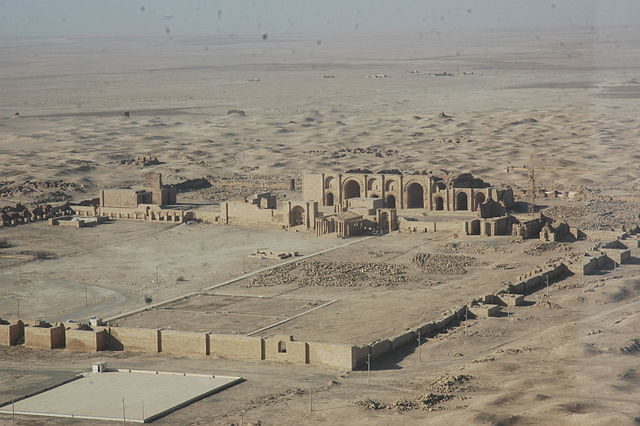
As an important frontier city, Hatra was properly fortified and able to turn back strong attacks from enemy armies led by ingenious commanders. The city was constructed on a ring-shaped plan based on military tradition, surrounded by inner and outer walls nearly 1.2 miles in diameter and strengthened with 160 towers.
It survived several attacks by the Romans, including the invasions of both emperors Trajan (in 116 AD) and Septimius Severus (in 198 AD), mainly because of strong defensive structures. It also played a significant role in the second Parthian War. The forces of Hatra won against the Persians in the battle of Shahrazoor in 238 AD. But Hatra was captured and destroyed in 241 AD by the enemy forces of Persia’s Sassanid Empire under the reign of Shapur I.
The area became part of the ancient Persian province of Khvarvaran. There are stories and legends that describe the collapse of Hatra. According to one, An-Nadira, the daughter of the King of Araba, betrayed the city and gave it into the possession of the Persians. Shapur killed the king and married an-Nadira but later killed her too.
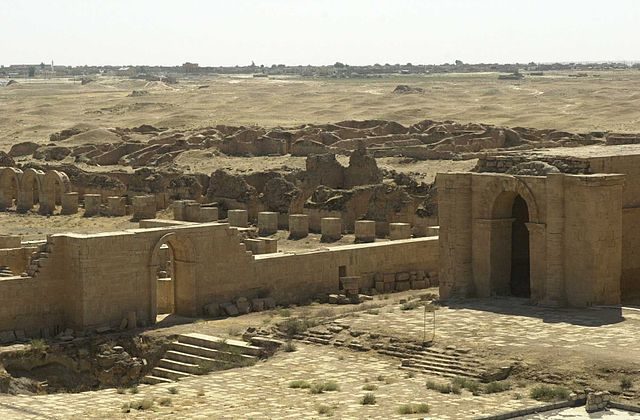
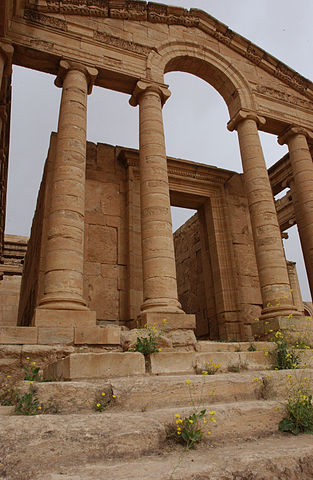
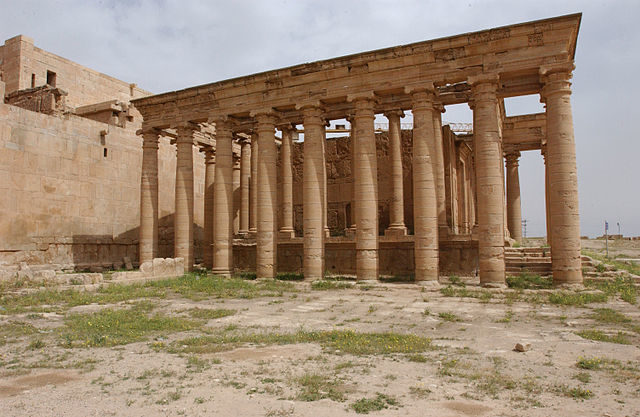
Now the city is in ruins and is an important archaeological site. The remains of the city, some of them well preserved, demonstrate the sophistication of the culture of the people who lived there. The temples are remarkable examples of architecture and technological development. The Roman and Hellenistic architectural styles harmonize and mix with more Eastern decorative qualities. The builders of Hatra produced a pleasing visual combination that can be still seen today.
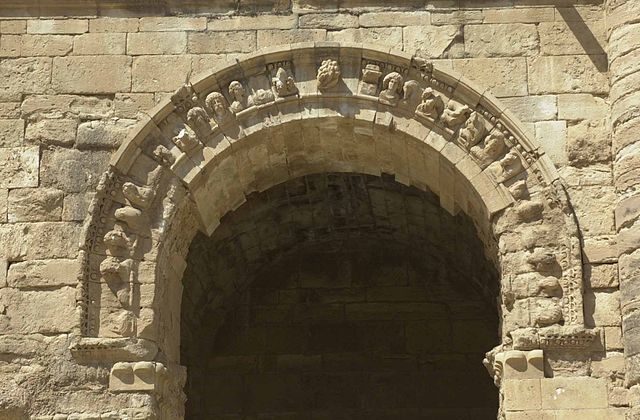
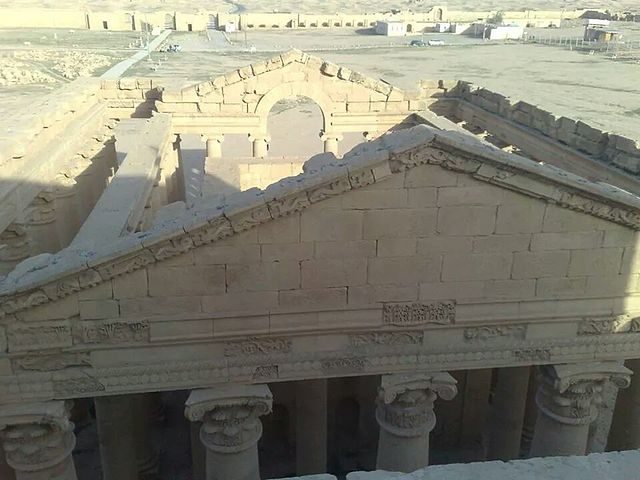
Hatra became known in Aramaic as Beit Elāhā, which means “House of God.” This city earned this name because of the many temples that were built there. Some of the buildings were pantheons: temples for all gods. There were temples where diverse gods like the Sumero-Akkadian god Nergal, the Greek god Hermes, the Aramean goddess Atargatis, the Arabian deities al-Lāt and Shāmiyyah, and the Mesopotamian sun god, known as Shamash were all worshiped.
Other deities found in Hatran Aramaic inscriptions were the Aramaean Ba’al Shamayn and the female deity Ashurbel, which was maybe a fusion of two deities: the Assyrian god Ashur and the Babylonian Bel.
The temples covered some 3 acres and were dominated by the Great Temple, a colossal structure with columns and arches that once was 100 feet high. The sacred buildings were dominant in the city’s center. The city’s sacred area was surrounded by a temenos (temple enclosure).
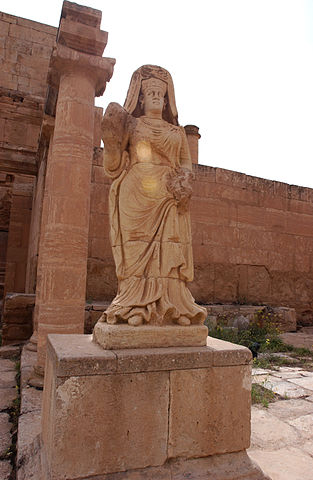
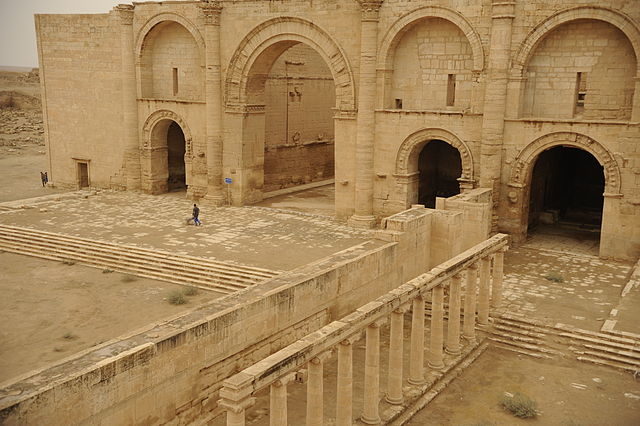
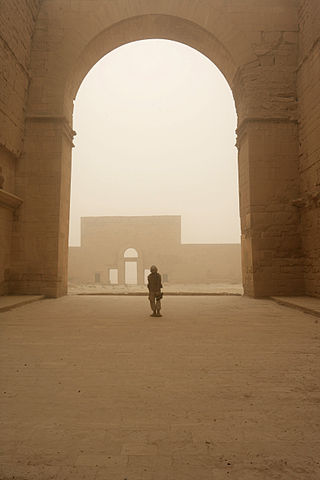
Hatra is a location with well-preserved buildings and is a great example of a Parthian city. Excavations on the site were carried out by German archaeologists between 1907 and 1911, and Iraqi archaeologists undertook further examination from the mid-20th century. Numerous statues and sculptures were discovered. In 1985, Hatra was designated UNESCO World Heritage site.
In the 1990s, the Iraqi government executed a huge restoration project for the whole complex, but this was used to glorify the name of Saddam Hussein. Parts of one reconstructed temple have Saddam’s name.
Although the site was not damaged during the American military invasion of Iraq in 2003, in the chaos that followed, many artifacts that had been excavated from Hatra were stolen from the National Museum of Iraq. On 7 March 2015, Iraqi officials reported that the terrorist group Islamic State of Iraq and Levant (ISIL) had begun demolishing the ruins of Hatra.
In April 2015, videos emerged that showed the destruction of the monuments. Extremists were smashing buildings, artwork, and statues around the site. It was also reported the parts of the ancient city had been bulldozed. Hatra was liberated in March 2017 and the extent of the destruction was confirmed.
